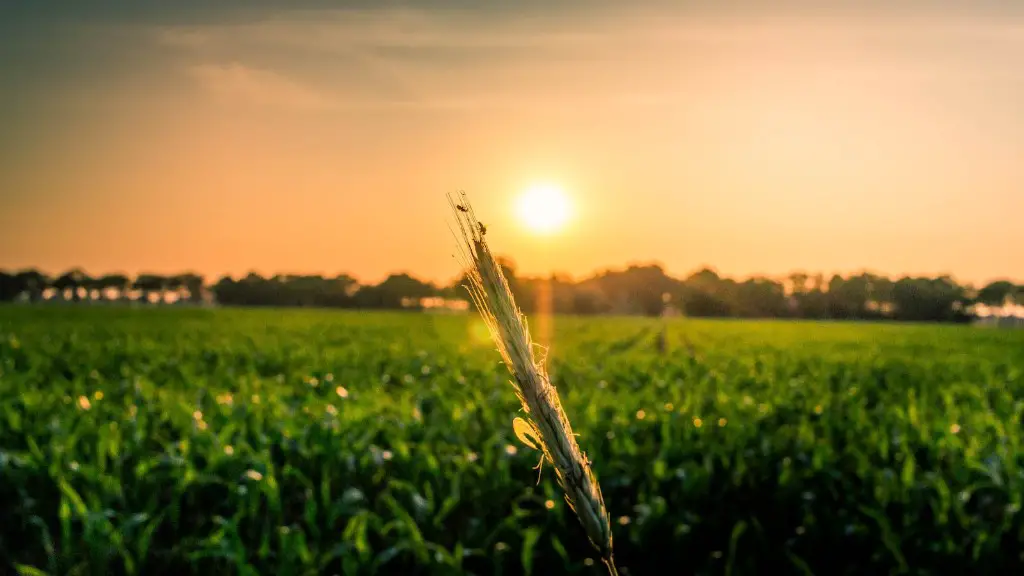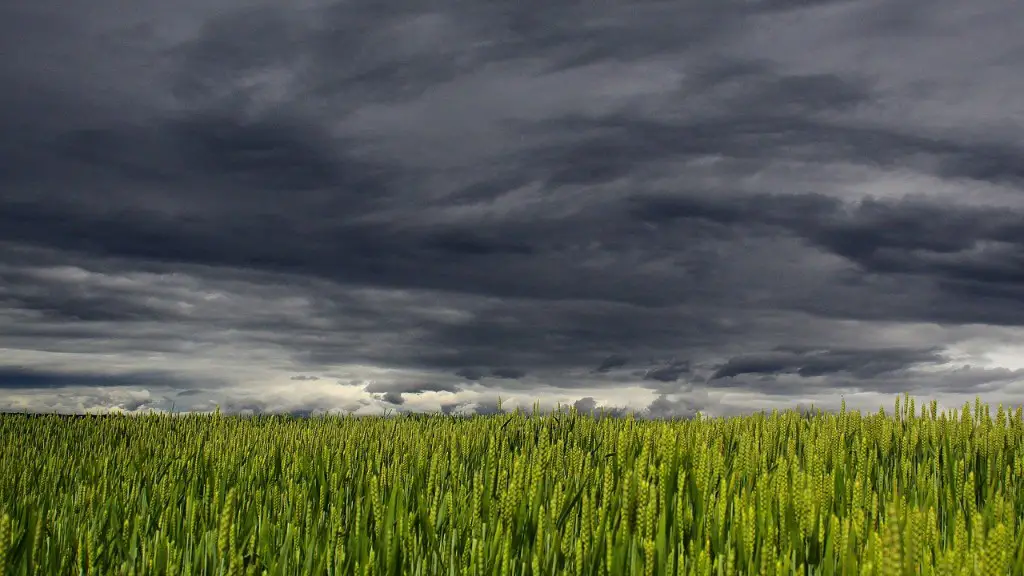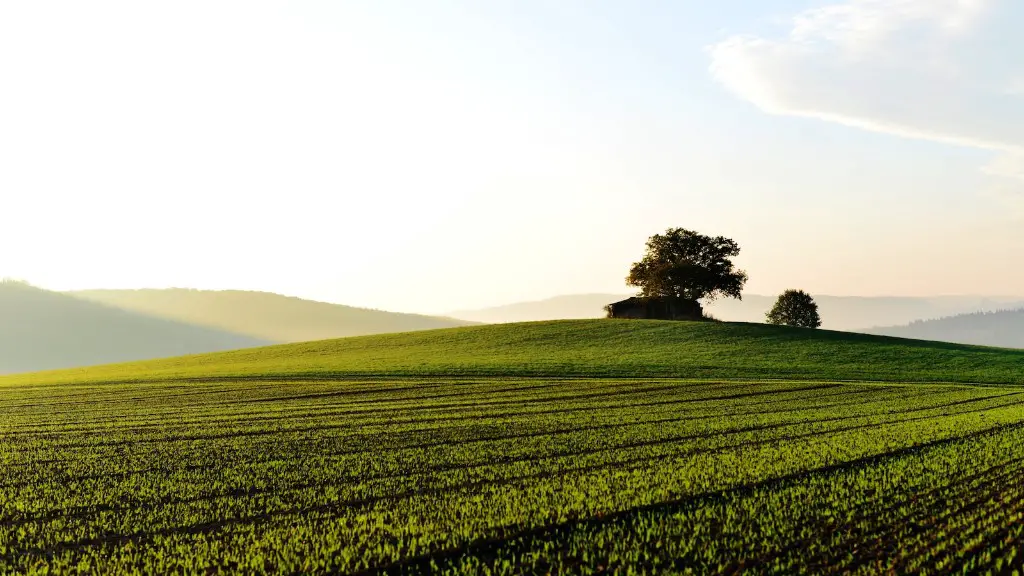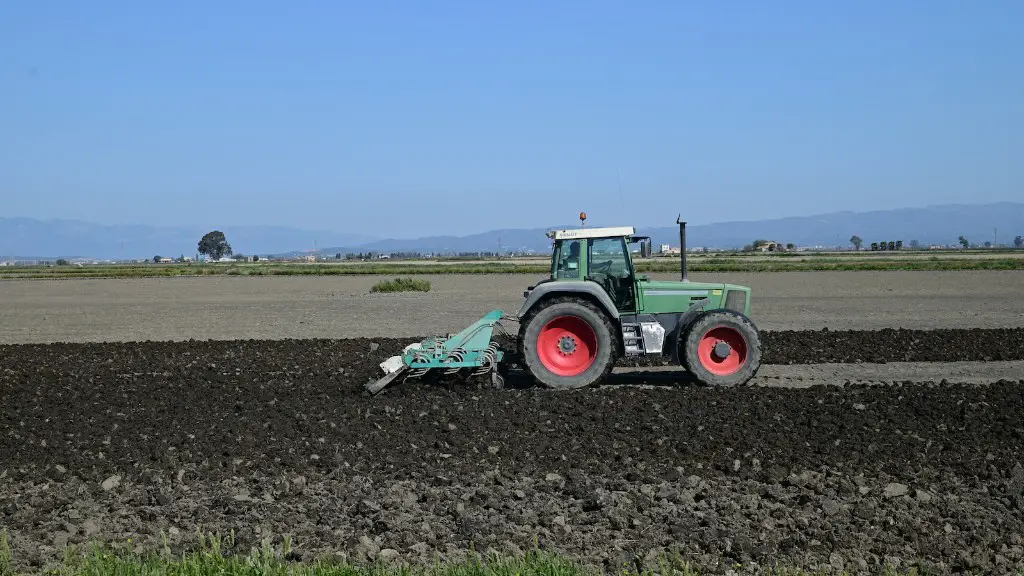Agriculture in America began when the Indigenous peoples of North America first developed it approximately 10,000 years ago. As the population grew, so did the development of crop-growing and animal husbandry, which provided the foundation for the development of agrarian societies. The Native Americans were able to harness a variety of techniques, such as crop rotation and the use of draft animals, to increase yields and make them resilient to varying weather conditions. From this, Indigenous populations were able to sustainably feed themselves and their growing numbers during the pre-Columbian era.
When Europeans arrived in the 16th Century, they brought with them crops and animals they were familiar with from their homeland. These European plants and animals were able to thrive in the American continent, and were cultivated by European settlers to varying success. It wasn’t until the 19th Century, though, that large-scale commercial farming became possible. This was due to a variety of reasons, such as advancements in technology, the availability of large tracts of land for purchase, and the development of railroads.
By the beginning of the 20th Century, the agricultural landscape in America had shifted significantly from what it had been centuries earlier. Large-scale industrial farms produced commercial crops that were able to feed large numbers of people and make the US a major exporter of grain and other agricultural products. This was aided by the destruction of the bison herds, which opened up the Great Plains for agriculture. In the 21st Century, agriculture in America has become even more industrialized, with monocultures dominating the landscape and technology playing a major role in production.
However, even in the modern era, there are still pockets of traditional agriculture in operation. Indigenous communities continue to practice traditional techniques of crop-growing and animal husbandry that would have been familiar to their ancestors thousands of years ago. Small-scale farms, organic farming, and urban gardens are also becoming more and more common, allowing people to access local, healthy food.
Agriculture in America has come a long way from its origins in Indigenous communities to its modern incarnation as a major industrial enterprise. From Indigenous technologies to the advances of the 21st Century, it has played a major role in the history of the United States, and will continue to do so into the future.
Organic Farming in America
Organic farming is an agricultural system that uses natural methods to raise crops and livestock, avoiding the use of synthetic chemicals, pesticides, and other artificial inputs. This can involve a variety of techniques such as crop rotation, companion planting, and the use of natural fertilizers and biocontrols. Organic farming has become increasingly popular in America since the mid-20th Century, with consumers seeking food that is produced in a sustainable, environmentally friendly manner. Organic farms are typically smaller in size than traditional farms, and are often found in more rural areas, although there are now more urban and suburban organic farms in operation.
Organic farming can be seen as a direct descendant of traditional Indigenous agriculture, which used natural methods to cultivate the land. These Indigenous practices were brought to the colonies by early European settlers, who also developed their own methods of growing and harvesting food. Since then, organic agriculture has undergone a renaissance in America, as more and more people have become interested in sustainable and responsible farming methods. As a result, the US now has one of the largest markets for organic food in the world.
Organic farming has been embraced by both consumers and the agricultural industry. It has been found to have many benefits, both for the environment and for human health. By avoiding the use of artificial chemicals and pesticides, it helps to protect the environment, and the health of those who consume the food. In addition, organic farming tends to be more diverse, with a greater variety of crops and animals being raised. This helps to foster biodiversity, as well as providing farmers with a more secure source of income.
Organic farming has grown rapidly in recent years, and is now the fastest-growing segment of American agriculture. It is estimated that the value of the organic sector in the US will reach $99.6 billion by 2027. With the demand for organic food continuing to increase, it is likely that organic farming will remain an important part of the US agricultural landscape.
Local Agriculture in America
Local agriculture has become increasingly popular in the US in recent years, as consumers seek food that is produced closer to home. Local agriculture is the practice of growing, harvesting, processing, and distributing food and other agricultural products that are produced within a specific local area, such as a city or county. It can involve a variety of growing methods, such as small farm production and urban gardening. By buying produce from local farmers, consumers can help support their local economies, as well as reducing their own carbon footprint.
Local agriculture is also beneficial for communities in other ways. By purchasing local produce, consumers can access fresh and healthy food, as well as supporting local farmers and businesses. It has been found to have a positive effect on employment and entrepreneurship in rural areas, as well as helping to preserve traditional knowledge and skills. In addition, by reducing the distance that food has to travel, local agriculture helps to reduce emissions from transportation and packaging.
With the increasing demand for locally produced food, local agriculture is becoming increasingly important in the US. Farmers’ markets, CSAs (community supported agriculture), and farm-to-table restaurants are just some of the ways that consumers are able to access local produce. There have also been a number of government initiatives to encourage local agriculture, such as encouraging the development of farmers’ markets and providing support for small farmers.
Local agriculture is an important part of the US agricultural landscape, and is growing in popularity. By supporting local farmers and businesses, consumers can not only access fresh and healthy food, but also help to preserve traditional knowledge and skills, and reduce their own carbon footprint.
Farming Technology in America
Farming technology has advanced significantly in America in recent years, with the development of precision agriculture and other technologies that are transforming the way that farmers work. Precision agriculture is the practice of using advanced technologies, such as sensors and automated systems, to optimize crop management and increase yields. It can involve a variety of techniques, such as using drone imagery to identify areas of soil variability, and using GPS-enabled tractors to automate field work.
The use of precision agriculture has many benefits, both for farmers and the environment. By providing farmers with an unprecedented level of data, they can make more informed decisions about planting, fertilization, irrigation, and other aspects of crop management. This can lead to increased yields and greater efficiency. In addition, precision agriculture can help to reduce inputs such as fertilizers and other chemicals that can have a negative effect on the environment.
Farming technology is becoming increasingly important in the US, and is being embraced by farmers across the country. There are a variety of government initiatives in place to promote its use, such as grants and tax incentives. In addition, farmers’ cooperatives and other organizations are providing training and support to help farmers get up to speed with the latest technology. As technology continues to advance, it is likely that its use in American agriculture will become even more widespread.
Farming technology has advanced significantly in America in recent years, and it is now playing an important role in the industry. Precision agriculture has enabled farmers to be more efficient and environmentally friendly, while also increasing yields. Its use is growing in popularity, and it is likely to remain an important part of the US agricultural landscape in the future.
Innovations in American Agriculture
Innovations in American agriculture have played a major role in transforming the industry in recent years, with the development of new methods, technologies, and crops. These innovations have enabled farmers to increase yields, reduce inputs, and reduce their carbon footprints. These advances have been made possible by a variety of factors, such as the availability of new technologies and the development of more efficient methods of production.
One of the main innovations in American agriculture has been the adoption of genetically modified crops. These crops have been genetically engineered to be more resistant to pests and diseases, and have enabled farmers to increase yields and reduce the use of pesticides. The development of new varieties of grains and other crops has also played a role, as has the use of new technologies such as precision agriculture and automated systems.
In addition, the US has seen a number of policy initiatives to encourage innovation in agriculture. These have included tax incentives and grants to support research, as well as the promotion of sustainable agriculture and other environmentally friendly practices. These innovations have helped to improve the efficiency of American agriculture and make it more resilient to changing weather conditions and other challenges.
Innovations in American agriculture have played a major role in transforming the industry in recent years. From the adoption of genetically modified crops, to the development of new technologies, these advances have enabled farmers to increase yields and reduce their environmental impact. With the continued development of new technologies and methods, American agriculture is set to remain an important part of the US economy for years to come.
Agricultural Machines in America
Agricultural machines have been an integral part of American farming for centuries, with the development of various machines and tools to automate various aspects of production. These machines can range from small-scale devices such as tractors, plows, and harvesters, to larger, industrial-scale machines such as combines, threshers, and cotton gins. They have played an important role in improving efficiency and productivity, and have enabled farmers to grow larger quantities of crops in a shorter period of time.
Modern agricultural machines have improved significantly in recent years, with the development of more advanced and efficient devices. Today, most farms use some form of mechanized equipment, known as “agricultural mechanization technology”. This includes a variety of machines, from more traditional tractors and plows, to GPS-guided tractors and robotic harvesting machines. Many of these machines are automated and can be controlled remotely, allowing farmers to do more work without having to leave their home.
Agricultural mechanization technology has many benefits, from improved efficiency and productivity to greater safety and reduced labor costs. It has also enabled farmers to grow larger quantities of crops in a shorter period of time, as well as allowing them to more easily adjust to changing weather conditions. As a result, agricultural machines have become a key part of the US agricultural landscape.
Agricultural machines have long been an integral part of American farming, and they have improved significantly in recent years. From traditional tractors to automated robots, they have enabled farmers to increase productivity and efficiency, while also reducing labor costs. With the continued development of new technologies and machines, they are likely to remain an important part of US agriculture into the future.





